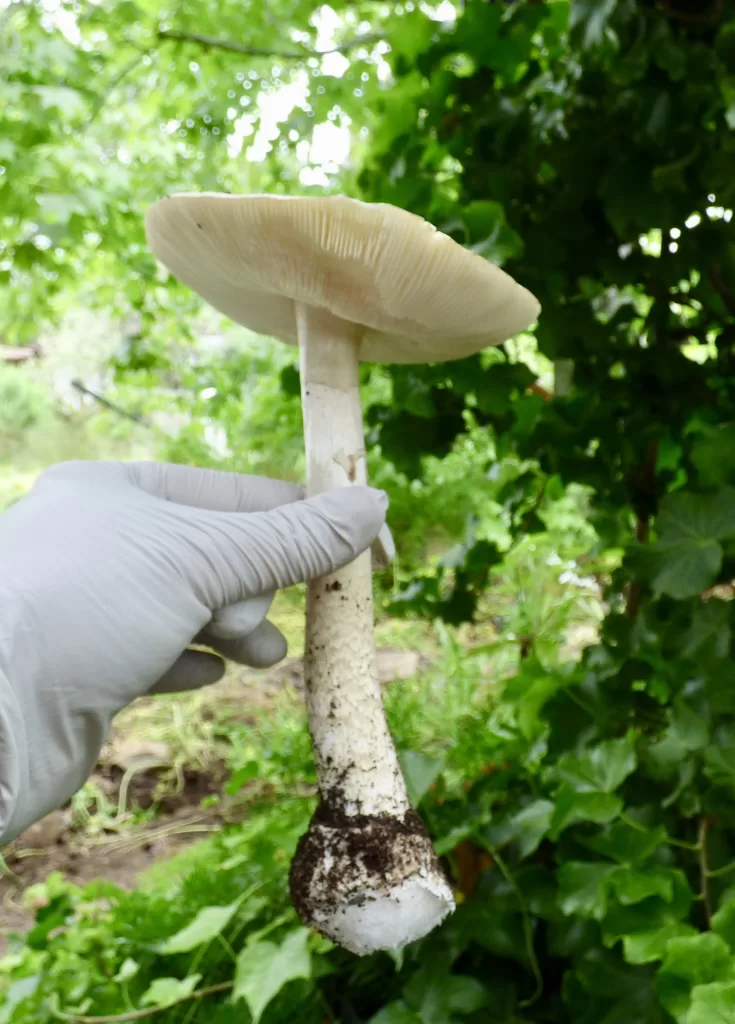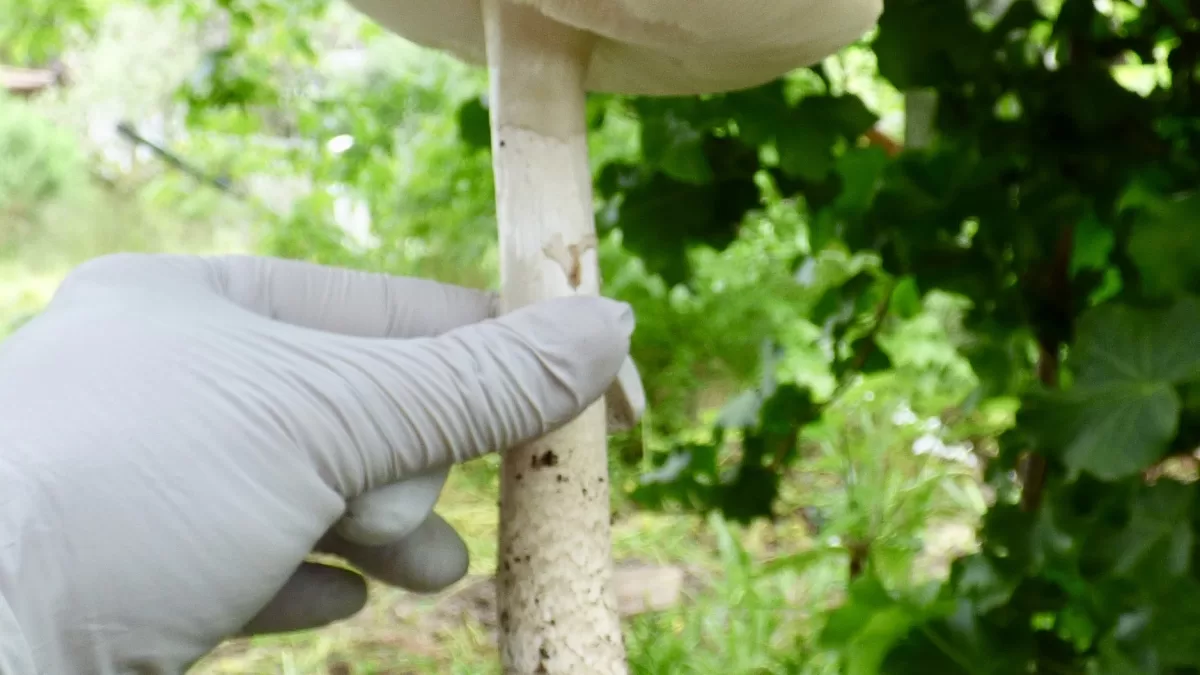
The abundant rains this spring have been a blessing for mushroom enthusiasts in the Santa Monica Mountains. Foraging is so popular this season that it has made the national news, but this is a potentially dangerous pursuit.
It’s estimated that 90 percent of mushroom poisonings are caused by Amanita phalloides, the “death cap” mushroom, or its close relative, Amanita ocreata, the “destroying angel”.
A. phalloides is a non native that is now found throughout California, and it has made itself at home among the oaks of the Santa Monica Mountains. A. ocreata is a native species, found throughout the Western U.S.
Eating even one of these mushrooms can cause permanent and potentially fatal liver damage. Even experts have mistaken these species for the common white edible mushroom they greatly resemble, and mushroom fanciers in pursuit of edible delights aren’t the only victims of this highly toxic mushroom. Young children, dogs and even cats are often attracted to backyard mushrooms and can become the victims of accidental poisoning.
Clinical toxicologist Rose Ann Gould, writing on the National Poison Control Center website, cautions that amatoxins, the specific poison present in the death cap and destroying angel amanitas may cause “no effects right away, but can damage the liver; a liver transplant may be necessary to survive.”
A medical treatment involving intravenous si-lib-in-in, an antidote derived from milk thistle, can help prevent the liver from absorbing amatoxin in human victims of the poison, but the treatment must be given early and the symptoms are difficult to diagnose, especially when the victim is a young child or a pet.
The death cap amanita is one of the most deadly mushrooms in the Santa Monica Mountains, but it isn’t the only one that causes problems. Inexperienced mushroom hunters can easily mistake the toxic jack o’lantern mushroom (Omph-al-otus ill-udens) for the edible and highly prized California golden chanterelle (Cantharellus californicus). The jack o’lantern can cause extreme gastrointestinal upset—the kind that sends people to the hospital—in addition to other unpleasant side effects.
Another easy mixup occurs between the edible and desirable black morel (Morchella elata) and several species of “false morel,” including Gyro-mitra es-culenta, which can contain mono-methyl-hydrazine (MMH), a volatile and potentially fatal toxin.
Attempting to ID a mushroom using photographs is not accurate enough to ensure that the species in question is safe to eat, and mistakes can have horrifying consequences. If in doubt, don’t take the chance. It’s often said that there are old mushroom hunters and there are bold mushroom hunters, but that there are no old, bold mushroom hunters. Use caution.
If a child is suspected of eating a potentially toxic mushroom, Poison Control recommends bringing an entire mushroom specimen to the emergency room if possible to aid identification. Foragers and children aren’t the only ones vulnerable to mushroom poisoning.
The North American Mycological Association (NAMA) cautions that dogs take a special interest in the death cap mushroom, which can have a fishy odor. Michael W. Beug, the Chair of NAMA’s Toxicology Committee, has studied mushroom toxicity for decades. He writes, “dogs may succumb to amatoxins more rapidly than humans may and so treatments employed without any delay are critical.”
Symptoms are “characterized by a 6-12+ hour delay in symptoms then severe GI distress and refusal to eat or drink. As with humans, use of IV fluids to maintain a strong urine output is of extreme importance.”
Beug reports that a veterinary treatment that involves aggressive rehydration therapy together with drainage of the bile duct is promising, but that treatment needs to be swift. He recommends that anyone with a dog suspected of consuming amatoxins contact www.petsreferralcenter.com or phone 510-219-0112 to find a vet with treatment experience.
Beug also recommends bringing a sample of the mushroom to the veterinarian for identification.
In the Santa Monica Mountains most mushrooms appear during the rainy season, but A. Phalloides can pop up any time soil conditions are moist enough. “May gray” mist and light precipitation, or garden irrigation can be enough to produce a crop of the mushrooms.
Parents and pet owners can reduce the potential for mushroom exposure by removing any suspect mushrooms as soon as they appear. Avoid spreading spores by disposing of the mushrooms in the trash instead of in the green waste container or kitchen compost, and wash hands after handling.
NAMA is arguably the best source of information on mushrooms of all types, poisonous and benign: http://namyco.org
If you think that a child or an adult has eaten a potentially toxic mushroom, call Poison Control right away at 1-800-222-1222. Poison specialists work with mycologists to determine the type of mushroom and can help provide guidance for emergency room doctors to ensure the victim receives the best treatment.













